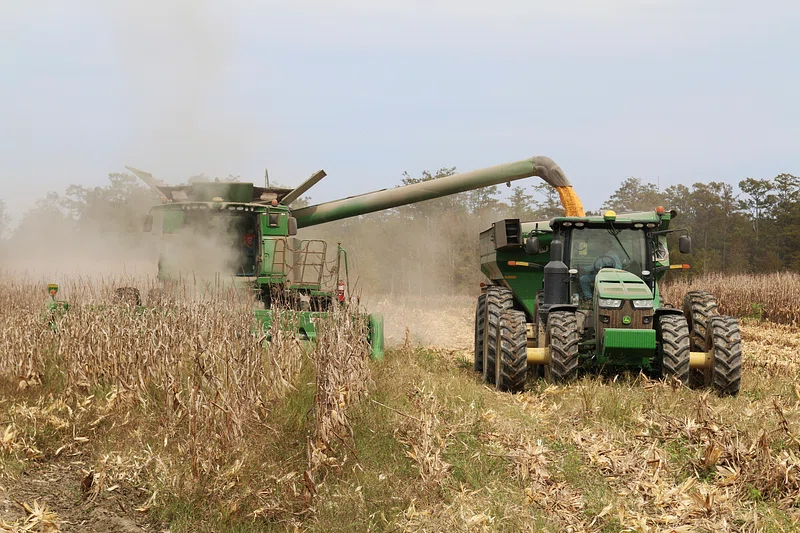Every farmer knows the truth: the combine is the heart of harvest. It’s the star player. But even the best combine in the world can’t win the game alone. What often slows things down isn’t the machine itself – it’s the team around it.
Think of it this way: your combine’s job is to eat acres. If it’s sitting still waiting on a cart or a truck, you’re leaving money in the field. The real secret to harvest efficiency is matching your support system – grain carts, trucks, augers, dryers, and bin setup – to the true capacity of your machine.
This post breaks down what you actually need, class by class, so you can see if your logistics are running neck-and-neck with your combine… or falling behind.
How Much Grain Does Your Combine Really Move?
Let’s take corn harvest in good conditions (200+ BPA) as the benchmark. Here’s what you’re looking at in bushels per hour (BPH).
Class 5 & 6 Combines (Approx. 280–360 HP)
Output:
- Class 5: 1,500–2,500 BPH
- Class 6: 2,500–3,500 BPH
What You’ll Need:
- Grain Cart: 750–1,000 bu, enough for 1–2 combine dumps.
- Trucks: 2–3 loads per hour. One semi if you’re close to bins, two if you’re hauling any distance.
- On-Farm Setup: A dryer rated for at least 2,000–3,000 BPH. A 10″–12″ auger (3,000–5,000 BPH) should keep up.
Bottom Line: Keep the combine rolling. A good cart and one or two semis make the whole system hum.
Class 7 Combines (Approx. 360–500 HP)
Output:
- 3,500–4,500 BPH
What You’ll Need:
- Grain Cart: 1,200–1,500 bu (3 dumps, less waiting).
- Trucks: 3–4.5 loads per hour. Two semis if bins are nearby, three for longer hauls.
- On-Farm Setup: Continuous-flow dryer at 4,000–5,000 BPH. Upgrade to a 12″–14″ auger or a small leg (5,000–7,000 BPH).
Bottom Line: This class produces fast. Bigger cart, at least two semis, and more horsepower in your grain handling are musts.
Class 8, 9 & 10 Combines (500+ HP)
Output:
- Class 8: 4,500–5,500 BPH
- Class 9 & 10: 6,000–8,000+ BPH
What You’ll Need:
- Grain Cart: 1,500–2,500 bu. In multi-combine setups, a 3,000+ bu cart can act as a rolling pit.
- Trucks: 4.5–8+ loads per hour. Three semis minimum, often four or more. Custom haulers become part of the plan at this level.
- On-Farm Setup:
- Continuous-flow dryer at 6,000–10,000+ BPH.
- Grain legs or high-speed drag conveyors (8,000–15,000 BPH).
- A fast, deep receiving pit so trucks unload in minutes, not hours.
- Smart bin layout so grain moves smoothly through your system.
Bottom Line: This is industrial-scale harvesting. Every link in the chain has to be heavy-duty, or the bottlenecks will choke your combine’s full potential.
Final Thoughts
No matter if you’re running a modest Class 5 or a beastly Class 10, the goal is the same: keep the combine moving. By sizing your carts, trucks, and grain handling to your machine’s appetite, you’ll save downtime, push more grain through your system, and finish harvest stronger.


Leave a Reply